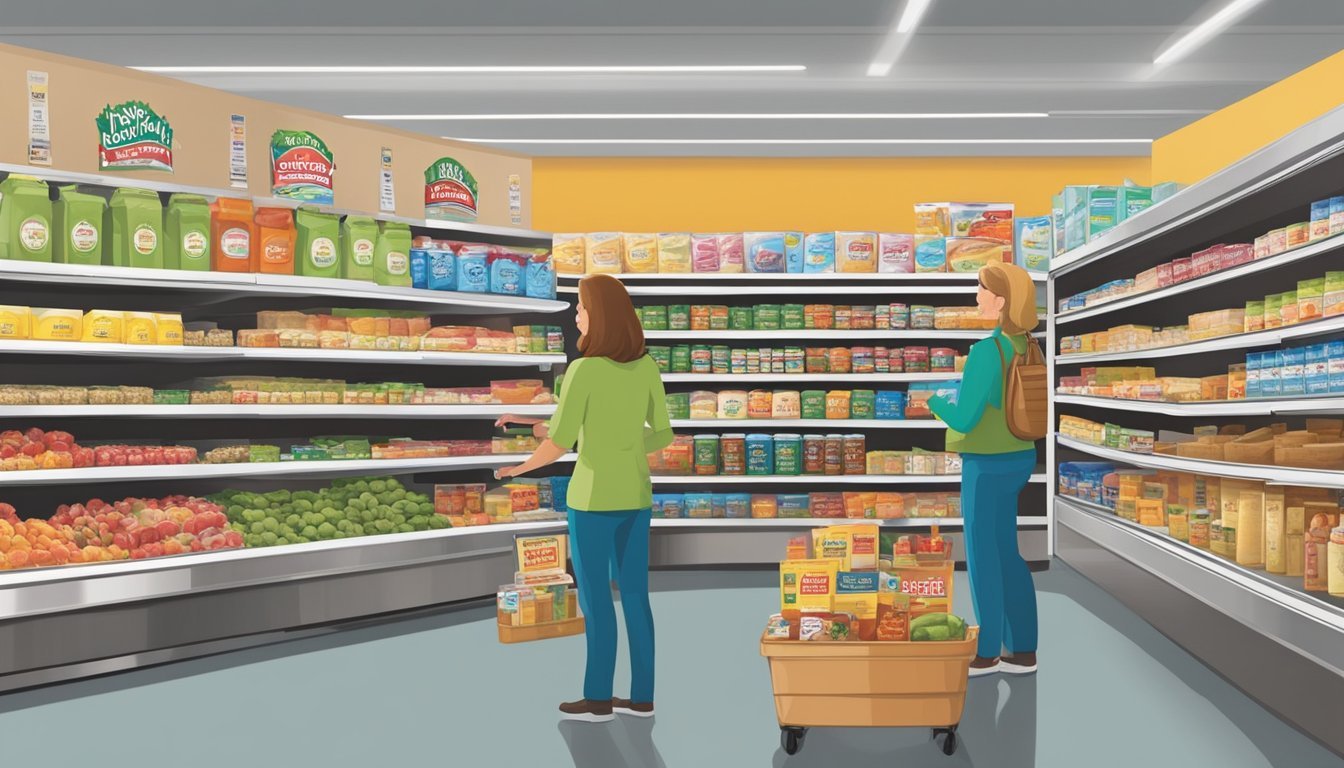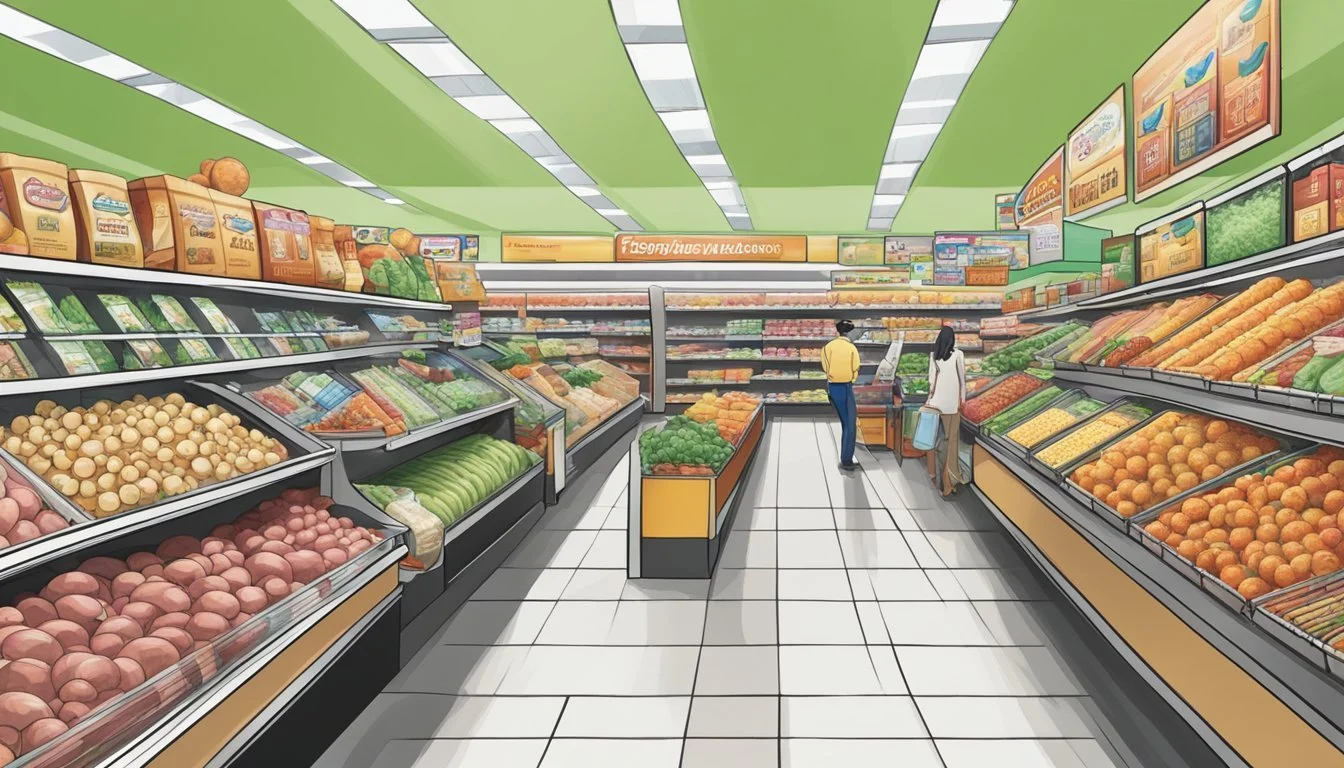Is FoodMaxx Cheaper Than Piggly Wiggly?
A Price Comparison of Two Popular Grocery Chains
When it comes to grocery shopping, price-conscious consumers are always on the lookout for the best deals. FoodMaxx and Piggly Wiggly are two grocery store chains that cater to budget-minded shoppers, each with its own unique offerings and pricing strategies. While both stores aim to provide affordable options, FoodMaxx generally offers lower prices on a wider range of products compared to Piggly Wiggly.
FoodMaxx operates as a discount supermarket, focusing on keeping costs down through various efficiency measures and a no-frills shopping experience. The store emphasizes bulk purchases and private-label products, which often translates to significant savings for customers. Piggly Wiggly, known for its historical significance as a pioneering self-service grocery store, maintains a strong presence in certain regions and is valued for its community-oriented approach.
Shoppers comparing these two chains may find that FoodMaxx's pricing strategy aligns more closely with those seeking rock-bottom prices across the board. However, Piggly Wiggly may offer competitive prices on specific items, particularly in its meat department, where it carries premium options like Certified Angus Beef. The choice between the two ultimately depends on individual shopping preferences and the specific products needed.
History of FoodMaxx and Piggly Wiggly
FoodMaxx and Piggly Wiggly emerged as influential players in the American grocery landscape. Their origins and innovations shaped modern supermarket practices.
Origin of FoodMaxx
FoodMaxx began as a discount grocery chain in California during the 1980s. The company aimed to provide low-cost groceries through a no-frills shopping experience. FoodMaxx stores featured warehouse-style layouts and focused on bulk purchases to keep prices down.
The chain expanded throughout Northern California, offering a wide selection of products at competitive prices. FoodMaxx's business model centered on passing savings to customers by reducing overhead costs and streamlining operations.
Piggly Wiggly's Legacy
Piggly Wiggly revolutionized grocery shopping in 1916. Clarence Saunders founded the first store in Memphis, Tennessee, introducing the novel concept of self-service shopping.
Prior to Piggly Wiggly, customers relied on clerks to gather their groceries. Saunders' innovation allowed shoppers to select items themselves, significantly reducing labor costs. The store featured price-marked merchandise and checkout stands, now standard in modern supermarkets.
Piggly Wiggly's success led to rapid expansion across the Southern and Midwestern United States. The chain's self-service model became the template for future supermarkets, transforming the retail grocery industry.
Overview of Pricing Strategies
Grocery chains employ various pricing strategies to attract customers and maximize profits. FoodMaxx and Piggly Wiggly utilize different approaches to offer competitive prices while maintaining their business models.
FoodMaxx Pricing
FoodMaxx operates on an everyday low price (EDLP) model. This strategy aims to provide consistently low prices across their product range. FoodMaxx focuses on offering generic and store-brand items at reduced costs.
The chain minimizes overhead expenses by utilizing a no-frills store layout and limited customer service. This allows them to pass savings on to consumers. FoodMaxx also employs bulk purchasing to negotiate better deals with suppliers.
Discounts at FoodMaxx are typically applied directly to shelf prices rather than through coupons or loyalty programs. This simplifies the shopping experience for customers seeking straightforward savings.
Piggly Wiggly Pricing
Piggly Wiggly adopts a more traditional pricing strategy. The chain often uses a high-low pricing model, combining regular prices with frequent promotions and discounts.
Piggly Wiggly stores may offer weekly specials and seasonal deals to attract customers. These promotions are usually advertised through flyers and in-store displays.
The chain maintains a balance between national brands and store-brand products. This provides customers with a range of price points to choose from.
Piggly Wiggly often implements loyalty programs and digital coupons to provide additional savings for regular shoppers. These programs help build customer loyalty while offering competitive prices.
Store Brand vs. National Brands
Store brands and national brands compete for consumer attention in grocery stores. Both FoodMaxx and Piggly Wiggly offer a mix of private label and name-brand products, giving shoppers options at different price points.
FoodMaxx Brand Selection
FoodMaxx carries a wide array of store brand products under its private label. These items typically cost 20-30% less than comparable national brands. FoodMaxx's store brand covers staples like bread, milk, eggs, and canned goods.
The quality of FoodMaxx private label items often matches national brands. Many are produced by the same manufacturers. FoodMaxx also stocks popular national brands, allowing customers to choose familiar products.
FoodMaxx rotates sales on both store and national brands. This gives budget-conscious shoppers opportunities to save on either option.
Piggly Wiggly Brands
Piggly Wiggly offers its own line of private label products called SE Grocers. These items are usually priced about 20% lower than national brands. SE Grocers products span categories like bread, chicken, and pantry staples.
The quality of SE Grocers items is comparable to national brands in many cases. Piggly Wiggly maintains a balance of store and name brands on shelves. This gives customers choice based on preference and price.
Piggly Wiggly frequently runs promotions on both store and national brands. Savvy shoppers can find deals by comparing prices and watching for sales.
Comparing Product Range and Quality
FoodMaxx and Piggly Wiggly offer distinct shopping experiences, each with its own approach to product selection and quality standards. Their differences in inventory and freshness impact customer choices and satisfaction.
Assortment of Products
FoodMaxx typically provides a wide array of products, focusing on offering variety at competitive prices. Their stores often feature:
Extensive selection of packaged goods
International food items
Bulk buying options
Piggly Wiggly, as a regional chain, tends to tailor its product range to local preferences. Their stores usually offer:
Local and regional brands
Specialty items specific to the area
Emphasis on traditional American groceries
Both chains stock essential categories like produce, meats, dairy, and bakery items. However, FoodMaxx may have a broader selection in some departments due to its larger store formats.
Maintaining Quality Standards
Quality control practices differ between the two retailers. FoodMaxx prioritizes:
Frequent restocking to ensure freshness
Partnerships with suppliers for consistent quality
Clear labeling of expiration dates
Piggly Wiggly focuses on:
Sourcing from local farmers and producers
Implementing strict quality checks for fresh produce
Training staff in proper handling of perishables
Both chains strive to maintain food safety standards and customer satisfaction. FoodMaxx may have an edge in consistent quality across locations due to centralized sourcing. Piggly Wiggly's local focus can result in fresher produce but may lead to variations between stores.
Discounts and Coupons
Both FoodMaxx and Piggly Wiggly offer ways for customers to save money through discounts and coupons. These strategies can significantly reduce grocery bills for savvy shoppers.
Leveraging Discounts
FoodMaxx focuses on everyday low prices as its main discount strategy. The store often features special offers on select items throughout the week. These deals are typically advertised in weekly circulars and in-store displays.
Piggly Wiggly provides discounts through its Pig Points Plus program. Shoppers earn points on purchases, which can be redeemed for discounts on future shopping trips. The program encourages customer loyalty and repeat visits.
Both stores may offer additional discounts for seniors, military personnel, or students on specific days of the week. Seasonal sales and holiday promotions are also common at both chains, providing opportunities for extra savings.
Utilizing Coupons
FoodMaxx offers digital coupons through its MAXX Offers program. Customers can access these coupons via the FoodMaxx app or website. To redeem an offer, shoppers select the desired coupon and enter their phone number at checkout.
Piggly Wiggly provides digital coupons through its Piggly Wiggly App. The app allows customers to browse and clip coupons directly on their smartphones. These digital savings are automatically applied at checkout when using the linked Pig Points Plus card.
Both stores accept manufacturer coupons, which can be combined with store discounts for maximum savings. Some locations may offer double coupon days, multiplying the value of manufacturer coupons up to a certain amount.
Customer Experience Evaluation
FoodMaxx and Piggly Wiggly offer distinct shopping experiences that cater to different customer preferences. Their approaches to atmosphere and service vary considerably, affecting overall customer satisfaction.
Shopping Atmosphere
FoodMaxx stores typically feature a no-frills warehouse-style layout. Aisles are wide and well-stocked, with an emphasis on bulk items and discount products. The lighting is often bright and utilitarian. This design prioritizes efficiency and cost-savings over aesthetic appeal.
Piggly Wiggly, in contrast, cultivates a more hometown feel. Stores are generally smaller and more intimate. The decor often includes local touches and a warmer color palette. This creates a more personalized shopping environment that resonates with community-oriented customers.
Service and Assistance
FoodMaxx employs a self-service model to keep costs down. Customers are expected to bag their own groceries and may find fewer staff members available for assistance. Checkout stands are efficient but can have longer lines during peak hours.
Piggly Wiggly places a stronger emphasis on customer service. Staff members are typically more readily available to help locate items or answer questions. The chain's focus on community often translates to more personalized interactions between employees and regular customers.
At Piggly Wiggly, checkout stands are usually staffed by trained cashiers who bag groceries. This can lead to a more relaxed checkout experience, though it may be slower than the self-service option at FoodMaxx.
Shopping Convenience and Store Accessibility
FoodMaxx and Piggly Wiggly differ in their store locations and online shopping capabilities. These factors impact customer convenience and accessibility.
Location and Convenience
FoodMaxx operates primarily in California and Nevada, with a focus on urban and suburban areas. Their stores are typically located in shopping centers or standalone buildings with ample parking.
Piggly Wiggly has a stronger presence in the Southern and Midwestern United States. Many Piggly Wiggly stores are found in smaller towns and rural communities, often serving as the primary grocery option for local residents.
Store hours vary by location for both chains. FoodMaxx generally offers extended hours, with many stores open from early morning until late evening. Piggly Wiggly stores may have more limited hours, especially in smaller communities.
Online Shopping Options
FoodMaxx provides online shopping through third-party delivery services in select areas. Customers can order groceries for home delivery or curbside pickup, depending on location availability.
Piggly Wiggly's online shopping options vary by franchise owner. Some locations offer their own online ordering systems for pickup or delivery, while others partner with third-party services.
Both chains have mobile apps that allow customers to view weekly ads, create shopping lists, and access digital coupons. The availability and features of these apps may differ between individual store locations.
Community Involvement and Impact
Both FoodMaxx and Piggly Wiggly demonstrate commitment to their local communities and sustainability efforts. Their initiatives aim to create positive impacts beyond just selling groceries.
Local Community Support
FoodMaxx partners with local food banks to donate surplus inventory. The company also sponsors youth sports teams and school programs in neighborhoods where they operate stores.
Piggly Wiggly takes a more localized approach due to its independently-owned store model. Individual Piggly Wiggly locations often tailor community support to specific local needs. Many stores host fundraisers for local charities and provide sponsorships for community events.
Both chains offer employment opportunities that support local economies. Piggly Wiggly's franchise model allows for more local ownership of stores.
Sustainable Practices
FoodMaxx has implemented energy-efficient lighting and refrigeration systems in its stores to reduce environmental impact. The company also focuses on minimizing food waste through inventory management and donations.
Piggly Wiggly encourages its independent store owners to adopt sustainable practices. Many locations use energy-efficient equipment and offer reusable bag programs. Some stores partner with local farms to source produce, reducing transportation emissions.
Both chains have increased their offerings of organic and locally-sourced products in response to consumer demand for more sustainable options.








